|
Introduction
Substantial evidence points towards the ignorance of athletes with regards to their required nutritional practices as reflected by the wide use of drugs to increase performance in training, unregulated consumption of protein supplements, amino acid supplements, pseudo-vitamins (inositol, carnitine and lecithin), minerals and vitamin supplements, and sports drinks.1 An adequate and balanced diet (both in terms of quantity and quality) with sufficient water supply represents a safe and healthy alternative that can promote peak athletic performance.2 An adequate and balanced diet for the athletes should not only provide enough calories to meet their daily energy needs but must also meet the needed vitamins and mineral requirements. In particular, during times of high physical activity, an adequate and balanced diet should ensure that the energy and macronutrient needs are met to maintain the body weight, to replenish glycogen stores, to provide adequate protein to build and repair tissues and to provide essential fatty acids and fat soluble vitamins.3 The percentage contribution of daily energy intake from macronutrients is 65% of total energy intake from carbohydrates, 12-15% from protein and 20-25% from fat, as recommended by sports and health societies.4
With respect to energy requirements, physical activities are classified into two categories; strength and endurance exercises. The strength exercise is very short in duration (several seconds) and is a non-oxygenated mediated process that involves the rapid hydrolysis of the stored intracellular adenosine triphosphate (ATP) to adenosine diphosphate (ADP) to release energy.5 The endurance exercise is longer in duration (several minutes) and is an oxidative-mediated process that requires oxygen for the mitochondrial energy-mediated processes, the Kreb’s cycle and the electron-transport chain.6 The ATP-creatine phosphate system is significantly depleted within 10-20 seconds, and therefore cytosolic glucose and glycogen are anaerobically catabolized (glycolysis pathway) to provide the muscles with ATPs to maintain the activity, with ultimate accumulation of pyruvic acid or lactic acid.7 Accumulation of lactic acid not only reduces the intracellular pH below 6.4, but also inhibits the rate limiting enzymes of glycolysis including phosphofructokinase.8 This negatively inhibits the ability of working muscles to continue with the onset of muscle fatigue symptoms.9
Exercise also raises the internal body temperature, and water is therefore essential to tolerate and balance such thermal effects. However, when this mechanism is not efficient, especially during vigorous exercise practices, the body can undergo dehydration representing a major health concern that can impair physical performance.10,11 Drinking water is recommended at an average rate of 1 ml/kcal/day for combating any such physiologic and/or environmental variations.12 Athletes have unique needs that include sufficient caloric intake for sport, adequate hydration, and timing of meals for peak performance. However, they are often misinformed or have misconceptions about these topics.13,14 The lack of professional nutritional supervision of athletes can result in adopting wrong dietary and nutritional practices, which can negatively affect their athletic performance, in particular by impairing the metabolic pathways of energy production.15,16 Therefore, this study was conducted to evaluate the nutritional practices (nutritional knowledge, eating habits and daily nutrients intake) among male handball athletes in Muscat city, Oman.
Methods
This descriptive study was held in collaboration with the Omani Handball Association and included 35 athletes who were involved in a serious training program for no less than three years to prepare for national competition. All enrolled study participants were recruited on a voluntary basis and signed informed consent forms. The study proposal was approved by the Research Ethical Committee at Sultan Qaboos University.
Data was collected through personal interviews and included questions pertaining to socio-demographic data (age, level of education, occupation), anthropometric characteristics (weight, height, body mass index [BMI]), and nutritional practices (nutritional knowledge and daily nutrient intake). Body weight was measured to the nearest 100 g, with minimal clothing and without shoes, using a calibrated portable TANITA scale. Height was measured to the nearest cm with the subject in full standing position without shoes using a calibrated portable measuring rod tape. Body mass index (BMI) was defined as the individual's body weight divided by their height squared (kg/m2).
Nutritional knowledge of the athletes on sports nutrition was evaluated, the study participants were asked to answer whether they knew the adequate percentage of macronutrients from the total energy intake that was indicated for them, and the nutritional knowledge were graded as: good (70-100% correct answers), fair (50-69% correct answer) or poor (less than 50% correct answers). The questionnaire was divided into four sections; (i) Knowledge of nutritional recommendation which included 6 questions pertaining to the athletic requirements of total calories, carbohydrates, fat, protein, water and vitamins; (ii) Knowledge of healthy weight loss methods which included 2 questions on the use of either diuretics or nutrient intake during caloric restriction period; (iii) knowledge of the glycogen load; (iv) Knowledge of basic nutrition which included 10 multiple choice questions about the role of macro- and micro-nutrients (vitamins and minerals) in energy production.
The retrospective dietary intake of the study participants was estimated using a semi-quantitative food frequency questionnaire (FFQ), where all subjects were asked to report the frequency (how often) and portion size for each food item consumed over the past 6 months, this period was chosen to take into account the seasonal variation in food consumption. The FFQ was adapted according to portion sizes based on commonly used household serving units/utensils in Oman, and was tested for its validity, reliability and reproducibility before conducting the study. The nutrient intake analysis was estimated for all foods consumed by the study subjects as reported in FFQ, using a standard computer-assisted software (ESHA Research, version 10, Salem, OR, USA). The collected data was coded, tabulated and expressed as means and standard deviation (SD) for continuous variables or percentages for categorical variables.
Results
All enrolled study participants declared no intake of steroid anabolic hormone, minerals or vitamins supplements. The data on the general characteristics of the studied subjects according to their level of education, occupation, number of training hours/day, number of training days/week and the presence of nutritional supervision is presented in Table 1. The mean age of the study participants was 27 ± 3 years. Their anthropometric assessments revealed that the mean height was 166 ± 12 cm, mean weight was 75 ± 10 kg, and body mass index (BMI) was 27 ± 3.
Table 1: General Characteristics of the study subjects.
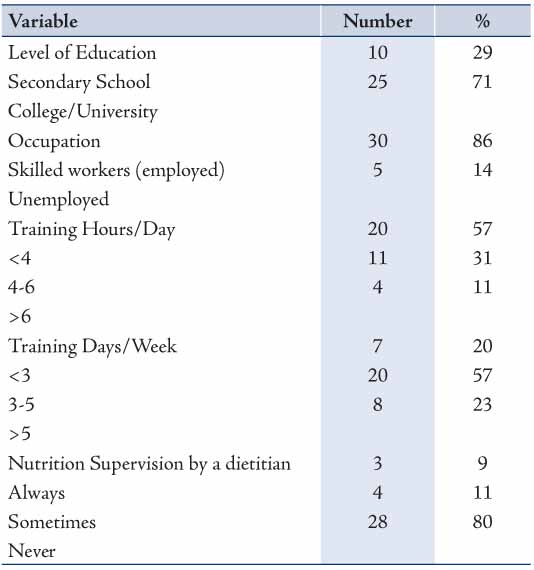
Fig. 1 shows the distribution of the studied sample according to their sources of nutritional information, and it was observed that 54% of the study participants acquired information from their coaches, 26% from sports magazines, 11% from peers and 9% from television. The data on the responses of the participants with regard to their nutritional knowledge is presented in Table 2. The answers showed that only 23% of the respondents gave correct answers for total energy intake, 46% for carbohydrate intake, 63% for protein intake, 11% for fat intake and 83% for water intake. The nutritional knowledge of the study participants was rated as fair.
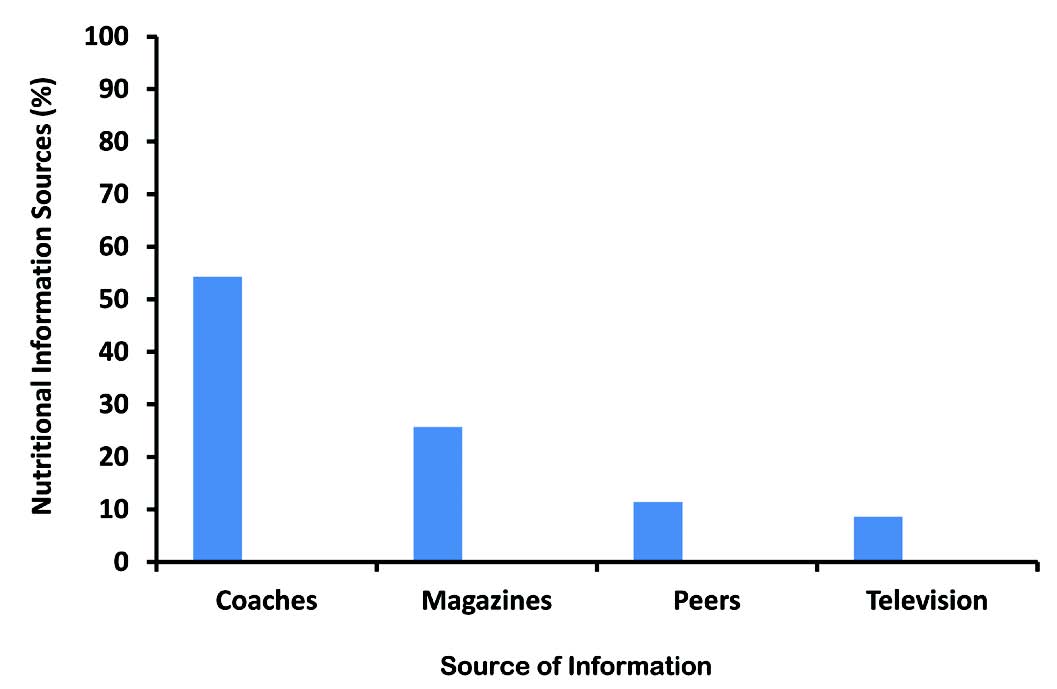
Figure 1: Distribution of the studied subjects according to their sources of nutritional information.
Table 2: Distribution of the studied subjects according to their answers pertaining to knowledge questions based on the nutritional requirements of athletes.
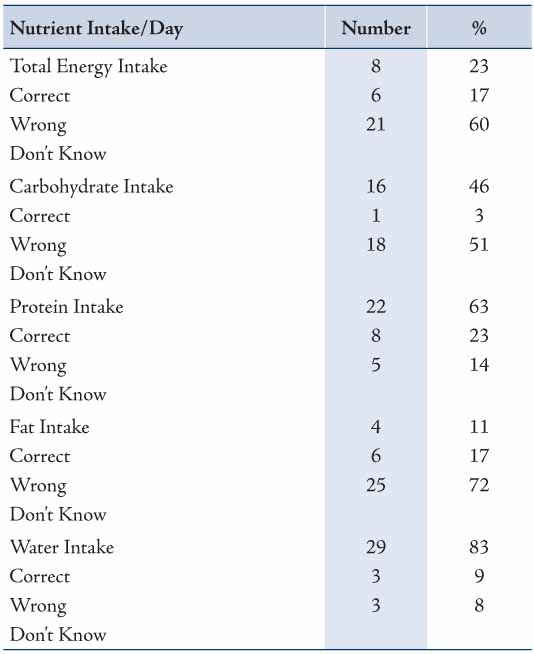
Table 3 represents the nutritional practices of the study subjects and results were scored either as good, fair or poor practice. The results revealed that 54% had poor dietary practices (<3 meals/day), 51% indicated that lunch was their principal meal, 51% always added extra salt to their meals, 28% had intake of protein supplements on a daily basis, and 51% had pre-competition glycogen load diets. However, none of the study participants reported the use of minerals or vitamin supplements. Fig. 2 presents the mean daily caloric intake which was 3674 ± 265 kcal, which was on average, contributed from the daily intake of 596 ± 66 g of carbohydrates, 147 ± 28 g of protein and 78 ± 20 g of fat. The difference between the daily intake of macronutrients was significant based on one-way ANOVA test followed by Tukey's test (F=43.45; R square=0.46; p=0.001).
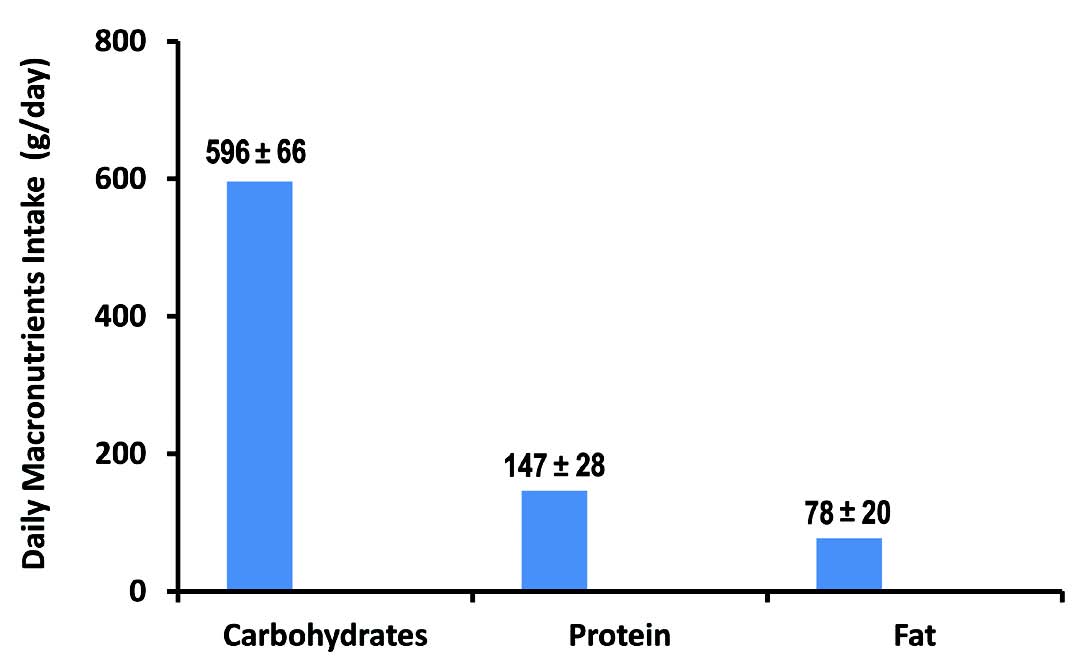
Figure 2: The daily macronutrient intake by the study subjects. (Data presented as mean ± SD).
Table 3: Distribution of the studied sample according to their nutritional practices.
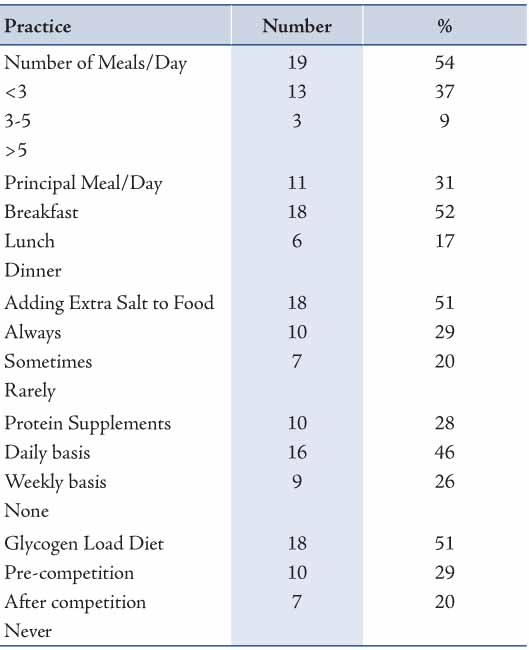
Discussion
In the present study, we examined the nutritional practices (knowledge, eating habits and dietary intake) of Omani male handball athletes. The results showed that the enrolled subjects on average had a BMI of 27 ± 3, which may be because of their additional lean body muscle mass but may simultaneously be an indicator of a greater desire to be overweight, as the International Obesity Task Force (IOTF), stated the BMI (kg/m2) reference values in adolescents (18 years and older) to be as follow: Normal: 18-25, Overweight: 25-30, and Obese ≥30.
The importance of an adequate diet and healthy food choices in optimizing health status, fitness level and athletic performance are well recognized.3,15 Sound nutritional practices and well-designed patterns of eating are required for optimal athletic performance as poor eating habits and suboptimal hydration choices can detract from athletic performance. It has been suggested that dietary strategies should target the factors that may cause fatigue and therefore, ultimately reduce the athletic performance.13 In a previous study, we reported that irregular lifestyle and wrong dietary habits of young Omani students were significantly related to their body weight and nutritional status.17
The nutritional knowledge of the study participants was rated as fair since only 23% of the respondents gave the correct answers for total energy intake, 46% for carbohydrate intake, and 11% for fat intake. However they showed a better knowledge of protein and water intake requirements; 63% of the respondents gave correct answers for protein intake and 83% for water intake.
The enrolled subjects were rated as having a fair nutritional knowledge. These results are in line with the previously reported data, which indicated that athletes did not demonstrate sufficient nutritional knowledge for their performance needs despite a reported high interest in nutrition.13,18 Nutritional misconceptions and a lack of nutritional knowledge of fluid intake, hydration, pre-competition meals, as well as for protein, energy, minerals and vitamin needs have been reported among athletes.19 Such misinformation may lead to wrong food choices and may affect their performance.20
The results also indicated that the nutritional knowledge of the enrolled Omani athletes mainly came from their coaches, as there was no direct professional nutritional or dietary supervision available. Most of the athletes tend to acquire nutritional information from magazines, health food store personnel, coaches, gym owners, and from other athletes.21 Some athletes also sought nutrition information and guidance from their parents, friends, physicians, dieticians and nutritionists. Coaches however, often play an important role in influencing the dietary habits of athletes, but have been reported to recommend inappropriate macronutrient and protein intake, fluid restriction and weight gain for athletes.18 Most coaches have limited knowledge and training in nutrition, yet often provide nutritional advice. It is therefore important that people who provide nutritional guidance to athletes have the appropriate knowledge base and dispense accurate information.
Both the athletes and their coaches are required to have sufficient nutritional knowledge to enhance the athletic performance and optimal health. A development of effective nutrition-education programs is required to increase the nutritional knowledge of athletes as well as their trainers, since nutritional education may significantly influence towards changing their dietary behaviors.22 A systemic review by Heaney et al. (2011) suggested that the relationship between greater nutritional knowledge and better dietary intake is limited.13 There is however, a need to develop valid instruments to assess the general and sport-specific knowledge and compare it with the athletes’ dietary intake.
The results also revealed that the study subjects exhibited poor eating habits and dietary practices, their meal consumptions were rich in carbohydrates, red meat, saturated fats, and with fewer intakes of fresh fruits and vegetables. The average daily percentage of energy contribution from carbohydrates, fats and proteins was however within the recommended limits.3
Conclusion
Overall, our findings suggest the need to develop strategies designed to formulate tailor-made nutrition education programs to improve the competence of Omani athletes and thus improve their nutrition knowledge for healthy eating and dietary behaviors in order to ultimately deliver optimum health and athletic competence.
Acknowledgements
The authors extend deep appreciation to Ms. Obaida Al-Hashmi for her dedicated effort in data collection for this study. The authors indicated no potential conflict of interest pertaining to this submission and no funding was received for this work.
References
1. Position of the American Dietetic Association and the Canadian Dietetic Association. Position of the American Dietetic Association and the Canadian Dietetic Association: nutrition for physical fitness and athletic performance for adults. J Am Diet Assoc 1993 Jun;93(6):691-696.
2. Maughan RJ, Burke LM. Practical nutritional recommendations for the athlete. Nestle Nutr Inst Workshop Ser 2011;69:131-149.
3. Rodriguez NR, Di Marco NM, Langley S; American Dietetic Association; Dietitians of Canada; American College of Sports Medicine. American College of Sports Medicine position stand. Nutrition and athletic performance. Med Sci Sports Exerc 2009 Mar;41(3):709-731.
4. Cotunga N, Vickery CE, McBee S. Sports nutrition for young athletes. J Sch Nurs 2005 Dec;21(6):323-328.
5. Brooks GA, Fahey TD, White TP. Exercise physiology: Human Bioenergetics and its applications. 2nd Ed, Mountain View, CA: Mayfield Publishing Company. 1996;21-29.
6. Zadik Z, Nemet D, Eliakim A. Hormonal and metabolic effects of nutrition in athletes. J Pediatr Endocrinol Metab 2009 Sep;22(9):769-777.
7. Bessman SP, Carpenter CL. The creatine-creatine phosphate energy shuttle. Annu Rev Biochem 1985;54:831-862.
8. Spriet LL. Phosphofructokinase activity and acidosis during short-term tetanic contractions. Can J Physiol Pharmacol 1991 Feb;69(2):298-304.
9. Di Prampero PE, Boutellier U, Pietsch P. Oxygen deficit and stores at onset of muscular exercise in humans. J Appl Physiol 1983 Jul;55(1 Pt 1):146-153.
10. Poehlman ET. A review: exercise and its influence on resting energy metabolism in man. Med Sci Sports Exerc 1989 Oct;21(5):515-525.
11. Rivera-Brown AM, De Félix-Dávila RA. Hydration status in adolescent Judo athletes before and after training in the heat. Int J Sports Physiol Perform 2011 Aug 30. [Epub ahead of print] PubMed PMID: 21941009.
12. Shirreffs SM, Sawka MN. Fluid and electrolyte needs for training, competition, and recovery. J Sports Sci 2011;29(1)(Suppl 1):S39-S46.
13. Heaney S, O’Connor H, Michael S, Gifford J, Naughton G. Nutrition knowledge in athletes: a systematic review. Int J Sport Nutr Exerc Metab 2011 Jun;21(3):248-261.
14. Spendlove JK, Heaney SE, Gifford JA, Prvan T, Denyer GS, O’Connor HT. Evaluation of general nutrition knowledge in elite Australian athletes. Br J Nutr 2012 Jun;107(12):1871-1880.
15. Gilbert N. Conference on "Multidisciplinary approaches to nutritional problems". Symposium on "Performance, exercise and health". Practical aspects of nutrition in performance. Proc Nutr Soc 2009 Feb;68(1):23-28.
16. Rodriguez NR, DiMarco NM, Langley S; American Dietetic Association; Dietitians of Canada; American College of Sports Medicine: Nutrition and Athletic Performance. Position of the American Dietetic Association, Dietitians of Canada, and the American College of Sports Medicine: Nutrition and athletic performance. J Am Diet Assoc 2009 Mar;109(3):509-527.
17. Al-Kilani H, Waly M, Yousef R. Trends of Obesity and Overweight among College Students in Oman: A cross sectional study. Sultan Qaboos Univ Med J 2012 Feb;12(1):69-76.
18. Stellingwerff T, Maughan RJ, Burke LM. Nutrition for power sports: middle-distance running, track cycling, rowing, canoeing/kayaking, and swimming. J Sports Sci 2011;29(1)(Suppl 1):S79-S89.
19. Shifflett B, Timm C, Kahanov L. Understanding of athletes’ nutritional needs among athletes, coaches, and athletic trainers. Res Q Exerc Sport 2002 Sep;73(3):357-362.
20. Rosenbloom CA, Jonnalagadda SS, Skinner R. Nutrition knowledge of collegiate athletes in a Division I National Collegiate Athletic Association institution. J Am Diet Assoc 2002 Mar;102(3):418-420.
21. American College of Sports Medicine; American Dietetic Association; Dietitians of Canada. Joint Position Statement: nutrition and athletic performance. American College of Sports Medicine, American Dietetic Association, and Dietitians of Canada. Med Sci Sports Exerc 2000 Dec;32(12):2130-2145.
22. Worsley A. Nutrition knowledge and food consumption: can nutrition knowledge change food behaviour? Asia Pac J Clin Nutr 2002;11(Suppl 3):S579-S585.
|